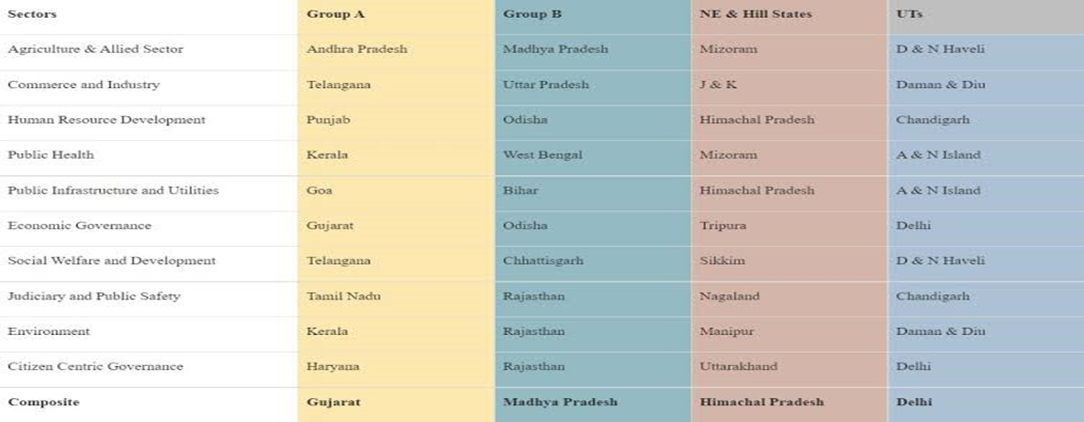CURRENT AFFAIRS
Get the most updated and recent current affair content on Padhaikaro.com
Good Governance Index 2021
- IAS NEXT, Lucknow
- 28, Dec 2021

Reference News:-
Good Governance Index 2021 was launched on the occasion of the Good Governance Day (December 25).
About the GGI:
Prepared by the Department of Administration Reforms and Public Grievances (DARPG).
- The objectives of GGI are to provide quantifiable data to compare the state of governance in all states and union territories, enable them to formulate and implement suitable strategies for improving governance and shift to result oriented approaches and administration.
The GGI 2021 framework covered 10 sectors and 58 indicators:
- The sectors are agriculture and allied sectors, commerce and industries, human resource development, public health, public infrastructure and utilities, economic governance, social welfare and development, judicial and public security, environment and citizen-centric governance.
The GGI 2020-21 categorizes states and union territories into four categories:
- Other states – Group A; other states – group B; North-East and hill states and union territories.
Performance of various states:
- Gujarat has topped the composite ranking, followed by Maharashtra and Goa.
- As many as 20 states have improved their composite GGI scores in 2021.
- Delhi has topped the union territories category composite ranking.
- Among the sectors, Uttar Pradesh secured top position in the commerce and industry sector.
- In the Northeast and Hill States category, Mizoram, and Jammu and Kashmir have registered an overall increase of 10.4 per cent and 3.7 per cent respectively over GGI 2019.

Limitations of the Good Governance Index:
- The limitations of the index are determined largely by the availability of data, which can be overcome with time as data becomes available from authentic and reliable government sources.
- While agreeing the importance of input and process based indicators, the framework is also limited by its focus only on outcome/output based indicators.